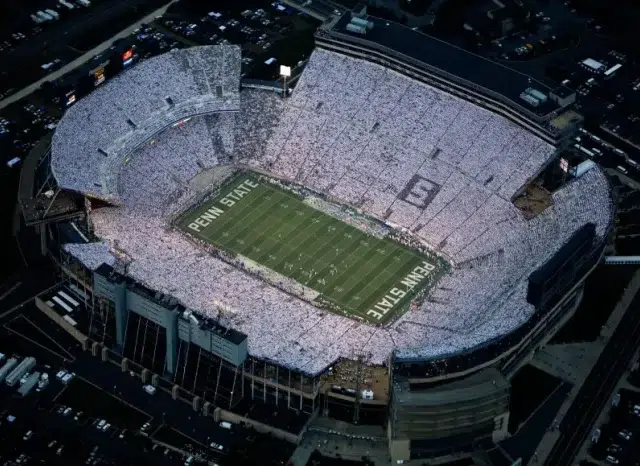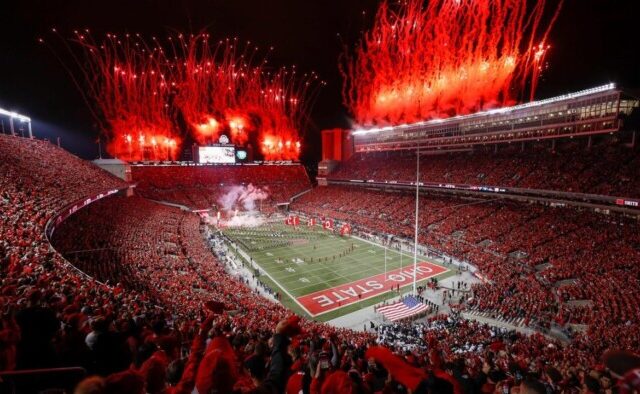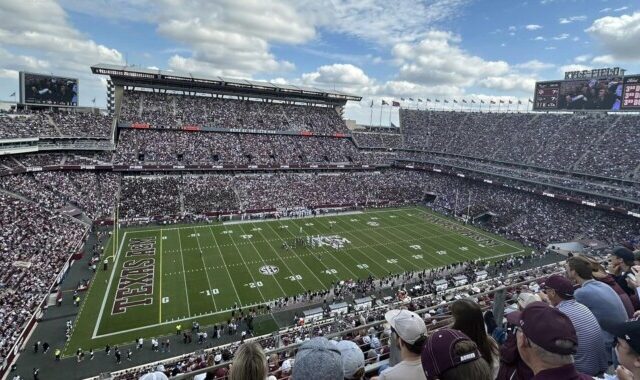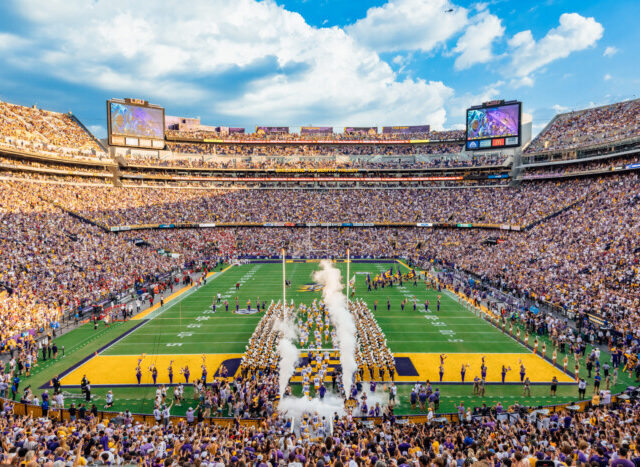Let’s get real—size isn’t everything… unless you’re talking stadiums. Picture this: You’re squished between a guy in face paint screaming “Go Blue!” and a grandma knitting a team scarf, all while 107,601 fans chant in perfect chaos. This is the magic of America’s largest stadiums. But here’s the kicker: The biggest arenas aren’t where you’d expect. Forget the NFL’s glitzy domes—college football owns this game. Ready to geek out on stats, secrets, and survival tips? Let’s roll.
What Makes a Stadium “Big”? (Spoiler: It’s Not Just Seats)
Okay, let’s nerd out for a sec. “Size” usually means permanent seats—no pop-up bleachers allowed. But here’s the twist: The vibe matters too. A “big” stadium isn’t just about cramming folks in; it’s about traditions that make 100k strangers feel like family. Think midnight pep rallies, secret handshake tunnels, and nacho cheese fountains (okay, maybe not that last one).
The Heavy Hitters: 5 Stadiums That’ll Blow Your Mind
I’ve been to three of these behemoths, and let me tell ya—the energy is nuts. Here’s the lowdown, ranked by seats (and sass):
1. Michigan Stadium – “The Big House” (Ann Arbor, MI)

Capacity: 107,601 – Source: NCAA
Why It’s Cool: It’s like a massive cereal bowl sunk into the ground. Seriously—you walk down to your seat. Built in 1927, this place has hosted everything from football to… hockey? Yep, they once froze the field for an NHL game.
Fun Fact You’ll Impress Friends With: The 2014 bathroom renovation added 240 new toilets. Priorities, right?
Game Day Survival Tip: Eat before you go. The concession lines? Longer than a Michigan winter.
2. Beaver Stadium – Penn State’s “White Out” Wonder (State College, PA)

Capacity: 106,572 – Source: Penn State Athletics
Why It’s Cool: Night games here areliterally blinding. Fans wear all white, turning the stands into a glowstick-lit snowstorm. Even Snoop Dogg called it “the craziest crowd I’ve ever seen.”
Fun Fact: They once fit 110,000+ fans by adding temporary seats. OSHA probably had a panic attack.
Visitor Hack: Download the stadium mapoffline. Cell service dies faster than your team’s playoff hopes.
3. Ohio Stadium – “The Horseshoe” (Columbus, OH)

Capacity: 102,780 – Source: Ohio State
Why It’s Cool: The south end zone is open, so you get sunset views while watching tackles. Architecture nerds love its 1920s neo-classical columns (translation: it looks like a football Parthenon).
Did You Know? During WWII, they stored jeeps in the tunnels. Talk about multi-tasking.
Pro Tip: If you’re claustrophobic, avoid the “Block O” student section. It’s mosh-pit-meets-Mad Max.
4. Kyle Field – Texas-Sized Noise (College Station, TX)

Capacity: 102,733 – Source: Texas A&M
Why It’s Cool: The crowd here hit 140.2 decibels in 2014—louder than a SpaceX launch. How? Practice. Aggies rehearse chants in the shower. Probably.
Fun Fact: The press box has a secret bourbon bar. Shhh.
Survival Move: Hydrate or die. Texas heat + 100k body heat = instant sauna.
5. Tiger Stadium – “Death Valley” (Baton Rouge, LA)

Capacity: 102,321 – Source: LSU
Why It’s Cool: Night games here feel like Mardi Gras crossed with a WWE match. Legend says the ghost of a past coach still haunts the locker room.
Tailgate Must-Try: Gumbo served from a literal canoe. Only in Louisiana.
Local Secret: Park at the LSU Vet School lot. Free and a 10-minute walk. You’re welcome.
Wait… College Stadiums Are Bigger Than NFL?
Yep! NFL’s biggest (MetLife Stadium) holds 82,500—small fries compared to college giants. Why? Tradition + cheap labor (ahem, students). Colleges prioritize bragging rights over luxury suites. NFL? They’d rather sell $25 nachos than extra seats.
Behind the Scenes: How to Run a 100k-Person Circus
I once asked a Michigan stadium manager,“How do you not lose people here?” His answer: “Prayer and walkie-talkies.” Real strategies:
- AI Traffic Control: Systems predict jams before they happen U.S. DOT.
- Hybrid Grass: Kyle Field’s turf survives everything from cleats to Beyoncé’s heels.
- Volunteer Army: Ohio State uses 2,000+ students for cleanup. Free labor? Classic.
FAQs (From a First-Timer Who Messed Up So You Don’t Have To)
Q: Will I get crushed in the crowd?
A: Only during exits. Pro tip: Wait 10 minutes post-game or risk becoming a human pancake.
Q: Can I bring my own snacks?
A: Nice try. Most ban outside food, but squirrel away mints in your socks. They never check socks.
Q: Are these stadiums eco-friendly?
A: Beaver Stadium recycled 18 tons of bottles last season. Michigan turns nacho grease into biodiesel. Tailgaters’ cars? Not so much.
Q: What if I hate sports?
A: Go for the people-watching. I once saw a man propose via Jumbotron… to his dog.
Q: Best time to visit?
A: September games = warm weather. November = frozen toes but epic rivalries.
The Future: Robot Ushers and Hologram Cheerleaders?
Stadiums are getting smarter:
- AI Concessions: Order a hot dog via app, and a drone drops it in your lap. (Testing at Ohio State in 2024.)
- AR Seat Previews: Use your phone to “see” the view from section 237, row ZZ.
- Silent Discos: Wireless headphones for fans who’d rather hear commentary than chaos.
Final Word: Go Get Lost in the Crowd
Here’s the truth: No article prepares you for that first step into a packed stadium. The noise hits like a wave, the crowd becomes a single heartbeat, and suddenly—you get it. These aren’t just buildings; they’re cathedrals of chaos, temples of tension, and honestly? Worth every overpriced pretzel.

